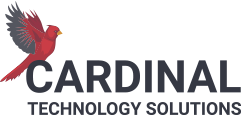Every time we walk into a potential client’s office, we ask four specific questions.
- What is the cost of downtime for the client?
- How much is this currently costing the organization each month?
- How many hours is the staff losing due to inefficient IT systems each month?
- What is the client’s average per hour salary cost?
Looking at these items together paints a true picture of what the company is “bleeding” out in IT dollars. When we ask, “How much do you currently pay each year in IT costs?,” the answer varies, but it’s always a much smaller amount than the actual number, which can be staggering.
The fact is, when considering IT costs, business owners typically only see the tip of what may be a very large iceberg under the water. Oftentimes, they don’t think to consider the cost of vendor management. For example, CPA firms rely on QuickBooks software, and it’s usually an accountant who calls the support line when something goes wrong. The same can be said about a medical practice that relies on electronic database programs. When the database goes haywire, it’s usually the office administrator who’s on the phone with support trying to resolve the issue. The problem with these scenarios is that these employees are now tied up doing something that is not their primary job. Meanwhile, the owner is still paying for their time. Every moment these employees are detained doing something other than their primary function is money out the window.
Executives, CEOs, office managers, and office workers all have important tasks to complete during the work day. We’ve all been there. You’re trying to get something out the door to a client or supervisor, but it seems like your computer is crawling at a snail’s pace. Nothing makes you want to rip out all your hair more than a slow computer and that aggravating little blue “spinning circle” in Windows. As we all know, time is money, and when you have 10 machines that are all in that kind of shape, you will lose both.
When we look at the current hardware supporting a business, we look at what software and functions it’s supporting. We look at the age of the systems, processors, memory, hard drives, anti-virus programs, etc. We look for bottlenecks in performance, weaknesses in the current infrastructure that lead to down time. Inefficient IT systems, poorly maintained workstations and servers, and malware infections all lead to down time and money lost. A business with nine employees, a gross revenue of $1,500,000 per year, and an average down time of three hours per year can lose over $10,000 in lost productivity. This number is before you add in any outsourced IT support costs. Almost all the lost revenue from down time is preventable by using the type of proactive IT support that Cardinal Technology Solutions provides. Proper preventative and proactive measures deployed on a network can almost eliminate down time entirely.
Cardinal Technology Solutions’ management techniques have saved all of our clients not only time but, most importantly, money. A recent study of one of our largest clients revealed an annual savings of over $45,000 per year, and a 99.6% uptime ratio. This is a direct result of how we proactively manage their IT infrastructure. We enhance performance where we see the need, by making changes to existing hardware and software or replacing it if need be. We actively manage the environment in real time and prevent issues from impacting business operations.
Put simply, we sell “up time” because that’s the only thing that matters to our clients’ bottom line. Your business network powers everything that you do. You rely on it every day to work so that you can grow your business. And we will be there every day to ensure that’s exactly what happens. The support CTS provides our clients empowers them, it doesn’t impact them. The next time you look at the cost of your IT support firm, ask yourself, “Is it a cost, or is it a savings?” We can help you make sure the answer to that question is the one you want.





